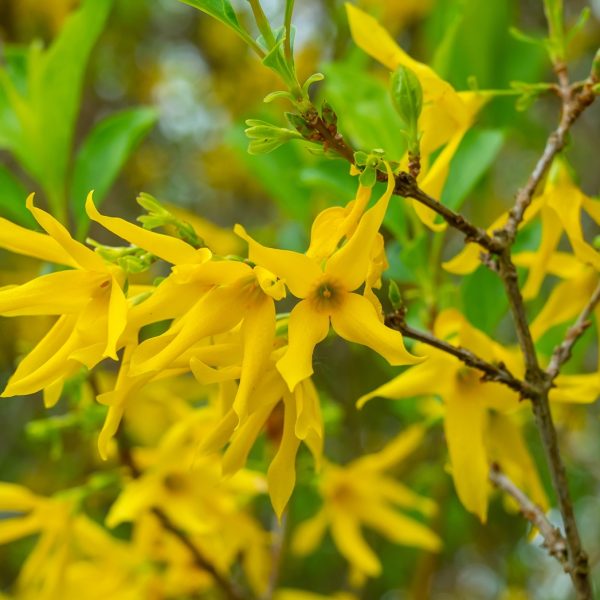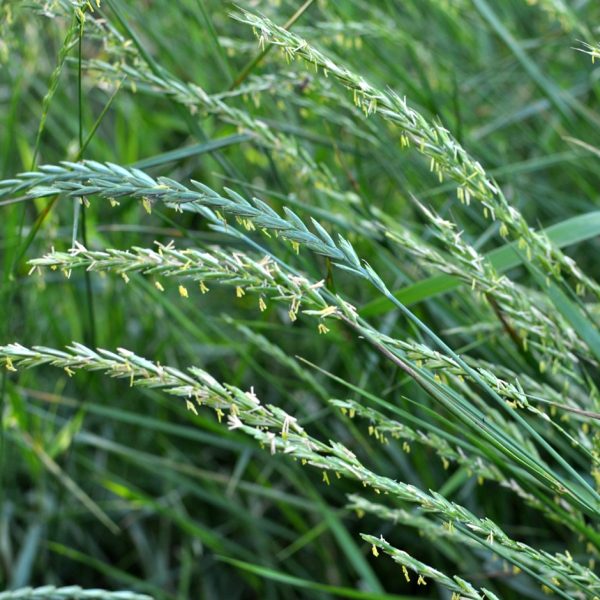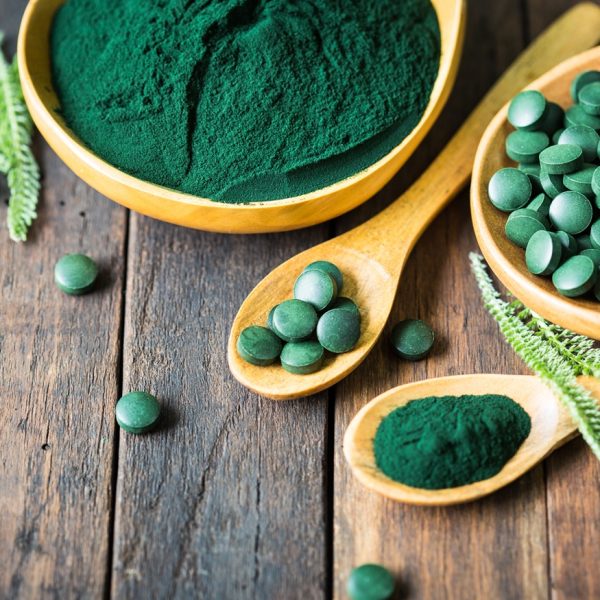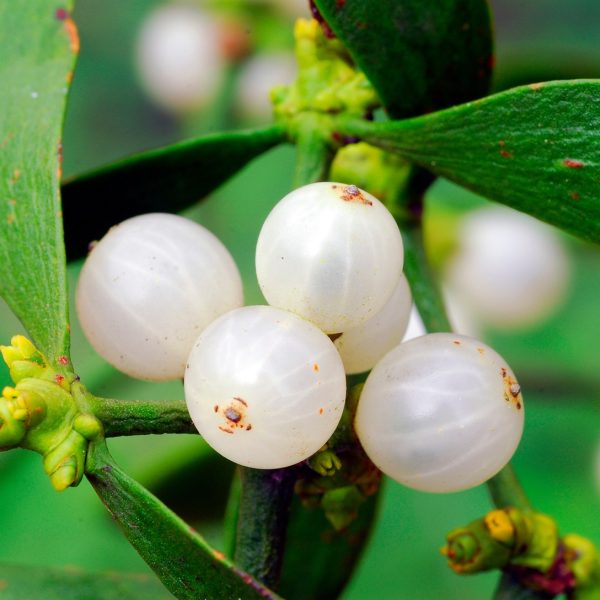Jo Webber introduces Ayurvedic philosophy, sharing how the elements relate to the doshas and how doshas relate to physical and mental attributes, time (of day, year and life), diet and herbs.

Ayurveda is the holistic system of medicine originating in ancient India, which has survived as a distinct entity until the present day. Ayurveda is translated as ‘science of life’ and can be interpreted as ‘the way of living with awareness and promoting longevity’. Its ways are described in its oldest known texts, the Charaka Saṃhitā and Suśrutha Saṃhitā (100 BCE and 200 CE), which tells of the substances, qualities and actions that are life enhancing, and those which are not . The view of Ayurveda is that the human body in health is harmonious, self-perpetuating and self-correcting, just as the universe is. Disruption of health then arises from imbalance through diet, emotions, lifestyle, seasonal factors, physical trauma, and toxins. Ayurveda seeks to find this root cause of imbalance and prescribes different regimens for each person to restore balance.
There are not many ‘one size fits all’ solutions in the Ayurvedic approach to healing as it is based on three fundamental principles of bioindividuality: vata, pitta and kapha dosha, which comprise the five great elements: space/ ether, air, fire, water, and earth. These are the components of everything we are and are surrounded by. To start with, Ayurvedic theory may appear complex, but its principals are beautifully simple. Essentially, it is the art of living wisely, in harmony with nature. At its heart is the concept that everything exists in relation to something else. The body affects the mind and vice versa, and moksha (liberation) can only be achieved by those in good physical, mental and spiritual health. This is the ultimate goal of Ayurveda. Ann in depth history can be found in our article A history of Ayurveda and the growth of the materia medica
The five great elements (Panchamahabhutas)
“Creation is the expression of cosmic consciousness. It is a journey of energy into matter. The five great elements are uniquely expressed in both mankind and plants.” (1)
According to Vedic science, all matter is composed of five elements, known as the panchamahabhutas, which range from the finest to the grossest: space / ether, air, fire, water, and earth. This may seem simplistic, but it is a sophisticated way to classify all matter found on earth as they refer more to states of matter than elements as we may know them. Every individual is a microcosm of nature and, as such, contains all five elements. Let us explore each of them (2).

Space / ether (akash)
Space / ether (akash) is ever humbly present as emptiness, allowing movement and communication as the other elements interact. Space is where life can take place, it is a place of potential, pure all-encompassing consciousness. In the human body we find it in the mouth, nose, digestive tract, uterus, lungs and abdomen. Its qualities are light, smooth, subtle and clear. Its actions are to give porosity or hollowness and lightness. It is associated with sound and the sense of hearing.
Air (vayu)
Air (vayu) is responsible for all movement. Where there is matter, there is motion, the constant motion of the planets, the change of the seasons and the spinning of electrons. In the human body, this air principle is found in the nervous system, respiration, ingestion, elimination and feeding every cell with oxygen. Its qualities include being light, cold, rough, dry, subtle and clear. Its actions are to produce dryness, lightness, roughness, clarity, weakness and looseness (creating separation or division). It is also responsible for the sense of touch.
Fire (agni)
Fire (agni) is the radiant energy responsible for transformation. On a daily basis we see fire transforming water to steam and food from raw to cooked. In our bodies, fire is found in maintaining body temperature, transformation, digestion, absorption and assimilation of thoughts as well as food. Its qualities include being light, hot, sharp, subtle, dry and clear. Its actions are to heat, digest (transform) and give complexion and colour. It is associated with the sense of vision and the eye.
Water (jala)
Water (jala) binds everything together, the universal cohesive solvent. In the human body it makes up around 70% of our body mass and is found in plasma, intercellular fluid, urine, sweat and saliva. Approximately 70% of the earth is covered with water, a representation of the human body being a microcosm of the macrocosm. Water is oily, cold, soft, heavy, mobile and dense. Its actions are to moisten, lubricate, secrete, soften and give pleasantness. It is responsible for the sense of taste.
Earth (prithvi)
Earth (prithvi) gives stability, structure, strength and stamina. We see it in the form of bones, teeth and skin. We nourish ourselves with foods from the earth and the body returns to earthly matter. It is heavy, dense, stable and clear. Its action is to help grow and accumulate mass, heaviness and stability. It is responsible for the sense of smell and the nose.
Whether we’re talking about individual people, herbs, nutrition, lifestyle activities or even the weather, all things can be described in terms of these elements. We can assimilate herbs, minerals, food and fluids because these substances are made of the same elements found in our own underlying make-up. Using this idea, we can start to understand what herbs might support a particular person. For example, a person predominant in the fire element has a tendency to overheat, and should minimise use of heating herbs (e.g. black pepper and ginger), spicy foods and other sources of heat, such as excessive sunbathing and saunas. However, all of these will support a person predominant in air and ether, both cold by nature.
The three doshas
“Just as the moon, sun and air support the body of this world by functions like releasing of strength, withdrawing of strength and initiating all actions respectively, similarly kapha, pitta and vata support this human body”. (3)
Ayurveda defines three dynamic pathophysiological entities as the basis for all body functions. Tridosha comprises two words: tri and dosha. Here, tri means a group of three basic elements (vata, pitta, and kapha) and dosha means ‘that which is capable of vitiation’. When vata, pitta, and kapha are vitiated (aggravated or imbalanced) they produce disease; when they are in equilibrium, they maintain balance and harmony in the body.

Vata dosha
That which carries smell (i.e. which has movement) (4).
Vata dosha is composed of ether and air, sharing qualities familiar to both elements: cold, light, rough, mobile, subtle and dry (5) The primary site of vata is the colon. It also resides in the bladder, thighs, ears, bones and the sense of touch. The root va means ‘to spread’ and it is responsible for all movements in the body; the flow of breath and blood, elimination of wastes, expression of speech, it moves the diaphragm, muscles and limbs, regulates the nervous system and stimulates the function of the intellect. It is like a current of electricity, responsible for regulating all electrical impulses in the body-mind. It is the messenger. In fact, without vata the other dosha are inert. At the cellular level, vata dosha may be associated with signaling pathways that regulate cell growth, differentiation, and cell death. Vata dosha also governs movements of cells, molecules, nutrients, and waste.
Pitta dosha
That which heats, burns or warms up (4).
Pitta dosha is made up of fire and water. This seemingly contradictory combination of fire and water is actually complementary. Pitta exists as water or oil in the body, thus pre-serving the tissues from the destructive aspect of fire. It is light, hot, sharp, oily, odorous and liquid (5) Its primary function is transformation being the force of metabolic activity associated with the endocrine function, hormone levels, digestion, body temperature, visual perception, hunger, thirst and skin quality. Mentally, it plays a role in understanding and in digesting sensory impressions. It resides in the eyes, blood, sweat glands, the small intestine, stomach and lymph. Its primary site is in the small intestine. Pitta dosha is responsible for processes bringing about change, such as digestion, metabolism, energy production, and maintenance of immunity. At the cellular level, it may be associated with the activity of enzymes, growth factors, hormones, and the reactions required for homeostasis and the maintenance of basal metabolism.
Kapha dosha
That which embraces, adheres, or keeps together (4).
Kapha dosha is a combination of earth and water elements. As the water element is contained within the earthen structures of the tissues and skin, the dry earth is moistened by the reviving water element. It is slow, heavy, cool, dense, soft, greasy, unctuous, sticky, cloudy, liquid and sweet. Kapha holds the body together. It is cohesive, gives shape and form, aids growth and development, lubricates and protects, and facilitates the senses of smell and taste. It relates to phlegm in the body. It resides in the chest, throat, head, pancreas, stomach, lymph, fat, nose and tongue. Its primary site is the stomach. It acts to form and maintain body mass, shape, and flexibility. At the cellular level, anabolic processes and the coordination of gene and protein function may be associated with kapha dosha.
Constitutional dosha: Prakruti

According to Ayurveda, we are born with a unique and individual combination of the three doshas, known as our prakruti. This is called our constitution (or mind–body type) and defines the ways our bodies and minds naturally function and respond. It is important to note that we all have all three doshas, it is just that we are born with ‘blueprints’ of a certain combination of them. Charaka, an ancient sage of Ayurveda, states that prakruti is determined by the doshic predominance of the following at conception (6): Sperm and ovum; seasons (as they have an effect on sperm and ovum); condition of the uterus; diet and lifestyle of expectant mother. For example, if your parents were both mainly pitta dosha but you were conceived during a period of change, stress and uncertainty, the chances are that both vata and pitta will be strongly represented in your constitution.
Yet, how are doshas related to our DNA? One can think of prakruti as akin to genotype. The science of genetics is evolving rapidly but broadly our DNA doesn’t change (unless exposed to certain toxins or radiation). Similarly, our constitution (or prakruti) doesn’t change as both are set when we are conceived. There have been some studies looking for genomic variations between people who are vata, pitta and kapha dosha, which have found significant differences between people with different dominant doshas irrespective of their ancestry (7).
There is also growing research to support our understanding of how our doshic constitution impacts physiological factors, for example in how we sleep (8). The emerging field of Ayurgenomics integrates concepts such as prakriti, with modern genetics research. It correlates the combination of doshas with the expression of specific genes and physiological characteristics. It also helps to interpret Ayurveda as an ancient science of epigenetics that assesses the current state of the doshas and uses specific personalized diet and lifestyle recommendations to improve a patient’s health (9,10)
A vata constitution (more ether / space and air elements)
A vata constitution has a changing nature with fluctuation, irregular appetite, thirst and bowel movements, variable energy levels and irregular menstrual cycles. These individuals are more endowed with movement; active eyes, fast speech, quick bodily movements and are always on the go. The mind is also agile, creative, lively and enthusiastic. There is a desire for change and routines are often a struggle. Things are picked up quickly but more often forgotten in the long term. They have more dryness and roughness in the body; dry, rough skin, lips and hair, cracking joints.
They’re more likely to be constipated and have wind. They are also colder; often have cold hands and feet and strongly dislike cold and wind, prefer warm environments, food and drinks. They will also be light; with a slender body and thin muscles finding it hard to put on weight. Sleep is also light and sometimes elusive. Those with a vata constitution will be more likely to suffer from constipation, gas and insomnia when not in balance. The mind when out of balance tends towards anxiety, fearfulness and insecurity.
A pitta constitution (more fire and water elements)
These individuals tend to be hot / warm, sweat easily and have preference for cooling environments, food and drink, with strong thirst. They have both lightness and liquidity due to the combination of water and fire, with moderate builds and energy. There is moderation regarding their sleep, with a tendency to require six to eight hours to wake feeling rested. They have a strong digestive fire, well able to digest food, information and experiences. If they go long without food, they’ll get irritable. They have easy, regular, looser bowel movements, and can gain or lose weight as required. Physically, they have more red or yellowish tones regarding, skin, hair, lips and teeth. They also have a degree of oiliness, with relatively soft skin and soft, flexible joints. Hair is prone to early greying or balding, and skin irritation and burning. They have a mental intensity, being focused, driven, goal-oriented, competitive, intelligent and persevering. The eyes have a penetrating gaze and their speech is organised, sharp and clear. Decision-making, organisation, discipline and routine come easily. They are more likely to have an odour, tend towards inflammation, hypertension and hypersensitivity when out of balance. Mentally, they may have a tendency to being more angry, aggressive or argumentative.
A kapha constitution (more water and earth elements)
Such constitutions tend to be solid, heavy and firm, with naturally broad frames and large, well-padded joints. They gain weight easily and find it hard to shift. Their eyes are large and pleasant, lips, nose and teeth are also large. They have colder bodies, so tend not to like cold, wet weather. Sleep is heavy, eight hours is often needed, with some difficulty waking. They have thick, moist skin and abundant hair. They tend to be smooth with higher levels of oiliness in both skin and hair, with well lubricated joints. Speech and movements are slow and deliberate. Their energy levels are steady, and they tend to have good stamina. The slow quality is also seen in the digestion and bowel movements, with lower thirst and weaker appetite. There is a natural resilience in the face of stress, with an inner sense of stability and contentment. Sometimes it takes a while to grasp new things but once they are remembered, they are there for life. When out of balance they tend to have excess mucus, congestion and water retention, along with lethargy and withdrawal.
Dual-dosha and tridoshic constitutions
Ayurveda recognizes seven types of constitution, based on the different combinations of the doshas. The vata, pitta and kapha mono constitutions have been described above. It appears that people today predominantly have two main dosha. For example, a pitta–kapha or kapha-pitta constitution would have a combination of kapha’s heavy, firm oiliness and pitta’s fire and intensity, with both sharing oiliness in common. A vata pitta or pitta vata constitution manifests as a combination of vata’s airy, dry nature, along with pitta’s fire and intensity, with both doshas sharing lightness in common. With a vata kapha or kapha vata constitution, kapha gives strength and stability and helps balance vata’s light inherent instability. However, they share the quality of coldness in common, so are aided by warming herbs, diet and lifestyle suggestions. Finally, some people are blessed with a tridoshic constitution, or an equal balance of all three doshas. This is the strongest constitution as it’s the easiest to keep in balance and manage.
Understanding one’s doshic constitution (and that of one’s clients) is a useful tool in getting to know oneself better. To be successful, we need the influence of vata to come up with ideas, creatively and enthusiastically; the influence of pitta provides the ambition, determination and drive to see these ideas through to completion; finally, the steady, sustaining influence of kapha keeps it all going on a day-to-day level. Self-knowledge fosters self-acceptance, and by making subtle changes to diet, lifestyle, how we work and relate to others, the doshas can be brought back into a more balanced state with profound effects. In this way, doshas can be a ‘lens’ through which we look at the world. However, one must also heed the following:
“When you begin to solely identify with your body type, and worse yet, with your conditions, you lose sight of your marvellous gift of humanity. The Sanskrit word “dosha” from which the body types are derived actually means “fault.” In identifying or typecasting yourself solely as a pitta, or vata, or kapha person, or becoming fanatical about choices that support each type, you are limiting your true self and infinite joy to the mere mundane. You are more than bodily fluids, tissues, and diseased conditions. You are the ever generating, ever changing infinite consciousness. It is wise to remember that you are a whole entity with body, mind, and spirit, each with your own incredible karma” (11)
There are some useful online questionnaires which can help explore the doshas, but it’s important to note these are in no way definitive and one may get different answers using different doshic questionnaires. It can get confusing as one may be ticking boxes covering both constitution (prakruti) and state of imbalance (vikruti). It is best to focus on answering the questions for when you felt most balanced — perhaps as a young adult — to find one’s constitution. Such approaches are best used as a spring board to a deeper exploration of doshic constitution with a qualified Ayurvedic Practitioner. There are also encouraging attempts to quantify the doshas in a reliable self-assessment questionnaire, so they can be readily applied in clinical studies to control for such differences in the same way sex, age, height and weight are routinely used (12).
Imbalanced state: Vikruti and manifestation of disease
“A person having equilibrium of dosha, agni (fires), dhatu (tissues), mala (wastes) and kriya (processes/actions), and a person who is possessed by spiritual, sensual and mental happiness is called a healthy person.” (3)

The doshas are in dynamic equilibrium and the optimal function of each dosha and normal interactions between them are essential for good health. Accordingly, individuals with balanced doshas are less susceptible to disease than individuals with disturbed doshas. An abnormal dosha can be inhibited, excessive, or vitiated with the type and nature of disease primarily determined by which dosha is affected. This imbalanced state is known as vikruti. In fact, the definition of dosha is: “the actual intrinsic factors which become excited and imbalanced, either conferring a predisposition to or actually causing morbidities are called as the dosha.”(13). These are some of the signs and symptoms of an increase in each of the doshas, offering helpful indicators as to which dosha has become most out of balance and offering a pathway to restore health (14):
- Increased vata dosha: Black, red-brown discolouration of the body (hyperpigmentation), astringent taste in mouth, emaciation, desire for warm things, bloating, constipation, weakness, weakness, insomnia, excessive talking, giddiness, and loss of confidence.
- Increased pitta dosha: Yellow, green, red colour (seen in stool, urine, eyes, or skin for example, along with sour, bitter taste; hunger, thirst, burning sensations, insomnia, increase sweat and desire for cool things
- Increased kapha dosha: White discolouration (such as skin, stool), sweet and salty taste, weak digestion, excess salvia, feelings of coldness, flabbiness, breathlessness, cough, nausea, oedema, and excessive sleep.
How do doshas get out of balance?
A key law in Ayurveda is the law of similarity and dissimilarity which states that ‘like increases like’. So, if foods predominant in air and space such as astringent and bitter raw leafy vegetables are eaten, this will increase those two elements in the body, which correlates to an increase in vata. Conversely, if oily, sweet foods, predominant in earth and water are eaten, vata will decrease but kapha will increase. Eating excess chillies (high in fire element) will increase the fire element in our bodies, correlating to an increase in pitta; something immediately perceivable. Looking beyond nutrition, this law also explains why vata dosha (with cold, dry, mobile qualities) is aggravated in autumn, a cold breeze and excess travel / movement.
Pitta dosha (hot, liquid qualities) in summer, by excess intellectual work and saunas. Kapha dosha (cold, heavy, stable, damp qualities) in winter, with day time naps and not moving enough. It is important to be aware of our dosha as it is only when they are in their natural balanced state (our constitutional state, our prakruti) that we remain in health. It is most often our primary dosha(s) that will tend to go out of balance when our lives aren’t as measured as they should be. For example, the person with a kapha constitution eating lots of kapha-increasing foods and having kapha-increasing lifestyle factors, could end up with a kapha imbalance, with water retention, weight gain and mental lethargy.
According to the above law, kapha can be reduced by substances with opposing qualities such as warmth, dryness and lightness, so dryer grains such as barley instead of wheat, plenty of movement and some dry skin brushing. Vata dosha with warm, oily, nourishing foods, warm oil massage, plenty of rest and grounding activities. Pitta dosha with cool, slightly drying substances and calming lifestyle activities.
| Ways to dysregulate vata | Ways to dysregulate pitta | Ways to dysregulate kapha |
|---|---|---|
| • Excess spicy, bitter, astringent food • Cold, raw, frozen food • Lack of food / fasting • Lack of routine or sleep • Cold, dry climate • Air conditioning • Excess worries, travel, movement • Use of stimulants and caffeine • High impact sports or adrenaline rush activities | • Excess spicy, salty, sour foods • Excess caffeine, alcohol • Frustration and anger • Overly heating forms of exercise • Exercise in midday heat • A hot climate • Work in hot environment / near fire • Regular use of steam baths and saunas • Competition | • Excess sweet, sour, salty taste • Heavy, sweet, greasy food • Overeating • Daytime sleep and sedentary lifestyle • Too little worries • A cool, damp climate • Bottling up feelings • Avoiding intellectual challenges • Use of sedatives |
| Bring vata into balance with warmth, nourishment, oil, grounding and routine | Bring pitta into balance with cooling, calming, moderation | Bring kapha into balance with lightness, dryness, warmth, and activity |
| • Warm, cooked, nourishing foods like soups, stews, whole grains, and healthy oils (ghee, sesame, olive oil) • Favour sweet, sour, and salty tastes • Maintain a regular daily schedule for meals, sleep, and activities • Practice calming yoga, meditation, and self-massage with warm oils • Enjoy warm oil massage • Wear warm clothes and avoid cold, windy environments | • Consume cooling foods like basmati rice, legumes, leafy greens, coconut water, and sweet fruits • Avoid spicy, fried, or overly salty foods • Favour cool environments, avoid excessive heat, and limit overexertion/ competition • Engage in gentle yoga, meditation, and cooling breathwork such as Sheetali pranayama • Enjoy coconut oil massage with cooling rose and sandalwood | • Favor light, warm, and dry foods such as steamed vegetables, barley, legumes, and spices like ginger and turmeric • Avoid heavy, oily, sweet, and cold foods • Engage in vigorous exercise and stimulating activities to energize the body and mind • Wake early, avoid daytime naps, and embrace social interaction and mental stimulation • Use dry brushing or massage techniques without oil to invigorate circulation |
Applying the dosha to times of day, year, life and geography
The classical Ayurvedic texts are clear on the fact it is not just human beings who are subjected to categorisation by the dosha. As the whole universe is made up of the five elements, so all things are made up of the doshas and the concepts can be applied more broadly. This can offer useful insights for the herbal practitioner.

Times of day
Morning is kapha time — we are sleepy and can feel sluggish, and the earth is damp and covered in dew; midday is pitta time, as the fiery sun is at its peak and digestive fire is also at its strongest; afternoon is considered vata time, things are winding down and energy can lower. The second half of the day follows a similar pattern, with kapha domination 6 pm to 10 pm, pitta 10 pm to 2 am, and then vata 2am to 6am. So, consistently waking at 2.30 am, can indicate a vata imbalance is behind the sleeplessness.
Being too wired to go to bed until 1am, or else going to bed at 10pm but waking between 12 and 1.30am may indicate increased pitta is responsible. This insight also explains why Ayurveda suggests eating the largest meal between 10am and 2pm, as pitta dosha peaks at this time which governs the digestive fire.
Times of year
Spring is considered kapha time with its increase in water element leading to new growth and potential. Summer is considered pitta time with its heat. Autumn is considered vata time with its cold, dry windy weather and the leaves drying out on the trees. Many people notice a seasonal pattern to their symptoms flaring up and subsiding, which often make good sense with a doshic insight. For example, spring often sees an overflow of kapha dosha with spring colds and hayfever, late summer and early autumn are a common time for heat related skin issues to flare up such as psoriasis and rashes.
Life stages
Kapha dosha is responsible for the growth of children (who are soft, loving and cuddly) to physical maturity (0–16 years); pitta dosha is responsible for the maintenance of the body in its maturity (16–55 years) when we must be organised, focussing on careers and family life. Elderhood is vata time, when we are full of wisdom and life’s experiences, as the space element increases in the mind. Individuals are especially vulnerable to dosha-related issues at this time, for example, there is a need for children to minimise mucus-forming foods (e.g. ice cream, orange juice and yoghurt) as they are at a kapha stage of life when excess kapha foods can cause coughs and colds. Conversely, in old age, when vata can aggravate, we need lots of warming food and warm oil massage to counter vata’s tendency to dryness and stiffness.
Geographical locations
A cool, dry, open, desert-like plain, breezy place or a mountain top can be considered places where vata dominates. A hot, steamy rainforest would be considered a pitta place. A damp, cool marshy place, rich in vegetation, would be considered a very kapha place. An air-conditioned building would also be viewed as a place that could potentially aggravate vata due to its cold, dry qualities. This insight may help explain why someone’s symptoms get aggravated or clear up completely when they change locations or working conditions.
How understanding doshas and constitution enriches practice
Understanding the doshas deeply enriches the practice of herbal medicine by providing a personalised, systemic diagnosis and treatment framework as follows:

Understanding doshic constitution (prakriti) and imbalance (vikruti)
As has been outlined, Ayurveda’s foundational concept of the three doshas defines an individual’s physiological and psychological makeup, and what health issues they are most prone to, as each dosha governs unique bodily functions and mental tendencies. Understanding a person’s dominant dosha(s) and imbalances supports precise diagnosis and personalised herbal interventions based on Ayurvedic pathophysiology.
- A vata constitution is associated with erratic digestion and energy levels. Ginger and fennel are ideal digestives, along with a mild laxative if dryness has led to constipation. Their naturally restless nature benefits from tonic, adaptogenic herbs such as ashwagandha and brahmi. Over the age of 55, vata starts to naturally increase so herbs to reduce stiffness in the body are helpful, such as boswellia. Herbs can be taken with warm water, milk, or almond milk and raw honey to enhance the effect (known as anupan in Ayurveda).
- A pitta constitution is prone to inflammation, irritability and excess acidity, so requires herbs to cool and calm, especially an overactive digestive fire (or agni). Amla is especially good for this with its sweet, cooling nature, along with aloe vera, shatavari, coriander, fennel, turmeric and liquorice. Herbs can be taken with warm water, milk or aloe vera juice.
- A kapha constitution is often associated with lethargy and congestion, requiring herbs to invigorate, supporting a slower digestion and metabolism. Ginger, black pepper and turmeric offer metabolic stimulation and reduce dampness. Trikatu (‘three spices’) is a wonderfully warming and pungent classic Ayurvedic blend ideal for this dosha. It dries mucous secretions and excess phlegm whilst also rejuvenating the lungs. Tulsi is also recommended if additional lung support and mucus reduction is required.
Understanding herbal energetics according to dosha
This approach empowers practitioners to harness each herb’s unique dosha-specific properties — nourishing and warming vata, cooling and calming pitta, stimulating and warming kapha — to restore doshic balance and optimising therapeutic success.
Ashwagandha acts as an ‘adaptogen’ helping us adapt to stress and the fatigue and depletion that can often follow. Its warming, oily, and nourishing qualities especially counterbalance vata’s cold, dry, and mobile nature. For individuals with predominant or aggravated vata dosha, who may experience anxiety, nervousness, insomnia, or fatigue, ashwagandha supports calmness, stabilizes the nervous system and promotes vitality. With predominant or aggravated pitta dosha, its warming nature should be carefully moderated to avoid exacerbating heat-related symptoms. For increased kapha, Ashwagandha’s warming quality is of great benefit, but its oily quality may need dose adjustment to prevent heaviness or lethargy.
Shatavari is a renowned tonic for the female reproductive system, which also has a strong anti-inflammatory effect, particularly within the reproductive and the digestive systems. It is unusual in nourishing each of the body’s tissues. Its sweet taste and oily, heavy properties helps to soothe the dry, cold, and light qualities of vata. It acts as a gentle stabilizer that promotes calmness and vitality in restless vata constitutions or those with aggravated vata. With its naturally cooling and bitter-sweet taste, it pacifies the heat and inflammation associated with pitta. It balances hormonal fluctuations and soothes digestive discomfort such as acidity. However, it’s sweet taste and heavy, nourishing nature can increase kapha if taken excessively. It can be combined with warming herbs like ginger or cinnamon to balance its effects.
Gotu kola is a tridoshic herb (balancing each dosha) by grounding vata, tonifying pitta, and reducing kapha. It is the perfect herb to support a healthy mind, promote concentration, memory, and intelligence. It is calming and nourishing with aggravated vata, soothing the nervous system and relieving anxiety and restlessness often associated with vata imbalance. Gotu Kola’s sweet, bitter and astringent tastes all pacify pitta’s fiery nature, helping to reduce systemic heat and feeling hot ‘under the collar’. Additionally, its cooling action promotes skin health by calming irritated or inflamed skin conditions common with pitta imbalances. Its bitter, astringent tastes and light, dry qualities help reduce excess kapha by improving circulation and stimulating metabolism. It supports cleansing processes, enhances blood flow, and can aid in weight management. The herb also rejuvenates and uplifts energy with lethargy associated with aggravated kapha by rejuvenating the nervous system.
Tulsi is prized for its adaptogenic effects, bringing mental clarity whilst also calming any nervous tension. It steadies the adrenal hormonal stress response allowing you to cope better under pressure. It is seen to be mainly vata and kapha reducing with the potential to increase pitta when used in excess. In vata types, careful dosing is also required since tulsi can be a little drying or stimulating, potentially increasing vata if misused. In pitta-dominant individuals prone to inflammation, acidity, and irritability, tulsi’s heating effect may increase heat in their system too much. For kapha constitutions struggling with congestion or sluggishness, tulsi’s invigorating properties are ideal in aiding metabolism and digestion of mucus with its dry, light, heating properties.

Turmeric has potent anti-inflammatory properties and efficacy in treating digestive and immune conditions. It is seen as balancing for all three doshas due to its combination of qualities, acting on each of the body’s tissues recognised by Ayurveda. Vata constitution benefit from turmeric’s heating nature, but excessive use may aggravate due to its dry, light qualities unless balanced with oils for example. For pitta constitutions, with tendencies to internal heat and inflammation, turmeric’s bitter and astringent tastes aid digestion and reduces inflammation but it should be prescribed carefully due to its heating effects. In kapha constitution one can have less concerns as its pungent, bitter and astringent tastes, along with dry, light qualities and heating effect is the ideal combination to balance kapha, stimulating metabolism and clearing mucus or stagnation, promoting vitality.
Triphala is such a widely used and useful formula as each of its ingredients specifically balances each of the doshas: Amla primarily pacifies pitta dosha due to its cooling action, along with sour, bitter astringent taste. It supports digestion, detoxification, and rejuvenation, combating excess heat and inflammation associated with pitta. Bibhitaki balances kapha dosha, due to its dry, light and heating qualities that help reduce mucus, promote detoxification, and support respiratory and metabolic functions related to kapha. Haritaki balances vata dosha with its heating nature and sweet post digestive effect. It aids in regulating the nervous system and digestive tract, supporting elimination, and calming the erratic qualities of vata. Because each fruit targets a different dosha, their combination provides a powerful synergistic effect that helps maintain digestive health, supports regular bowel movements, enhances immunity and promotes detoxification without disrupting doshic equilibrium. Its tridoshic nature makes it a cornerstone of Ayurvedic herbal therapy, explaining its widespread use and efficacy in Ayurveda.
Complementing lifestyle and diet suggestions
Beyond the herbal prescription, understanding doshas can also guide some appropriate dietary and lifestyle recommendations (as outlined in the table above). In summary, a vata individual is advised to consume warm, moist, grounding foods and adopt calming routines. A pitta individual benefits from cool, non-spicy diets and stress-reduction practices to prevent overheating. For kapha types, more stimulating activities balances their natural heaviness and aids detoxification.
Daily and seasonal adjustments
The dynamic fluctuation of doshas with times of day, life, seasons and environment may inform both diagnosis and treatment. For example, during the cold and dry autumn season when vata is naturally higher, treatments aim to pacify vata‘s qualities (dryness, coolness, roughness). A herbal ashwagandha oil with its warming and stabilizing energetics would be ideal. Aloe vera is prized for its cooling, bitter, and moistening qualities, which help balance pitta dosha that tends to increase during summer months. Excess pitta, associated with heat and inflammation, can cause skin irritation, digestive disturbances, and inflammatory conditions and aloe vera’s cooling nature soothes these imbalances effectively.
Looking at how doshas predominate different times of the day, we’ve outlined how 6–10 am is a kapha time of day characterised by heaviness, stability, and moisture. Morning intake of kapha-pacifying herbs such as ginger, turmeric, or triphala can stimulate digestion and clear accumulated toxins. Pitta, governing digestion, peaks around midday when agni is strongest. So, this is a beneficial time to take herbs that stimulate digestion and that enhance assimilation like ginger, cumin or coriander.
Summary
Understanding the doshic constitution and imbalances offers unique insight to guide herb selection by matching herbal energetics to individual doshic imbalances and constitutional needs. It supports holistic healing by addressing the root imbalances reflected in unique physical, mental, and emotional patterns. It helps anticipate and mitigate potential aggravations of dosha imbalances (e.g., overheating pitta with too much turmeric).
It also allows for the adjustment of formulations, doses, and complementary lifestyle or dietary recommendations to optimize effect and reduce side effects. Overall, it supports transforming herbal medicine from uniform protocols into personalised, integrative therapies that respect and work with the body’s intrinsic nature, alongside seasonal and even geographical considerations.
References
- Pole S. Ayurvedic Medicine: The Principles of Traditional Practice. 2nd ed. Churchill Livingstone; 2013. Foreword.
- Vāgbhaṭa. Astanga Samgraha, Sutra Sthana 17/4-8. (Classical Ayurvedic text; date unknown, traditionally ca. 7th century CE).
- Suśruta. Sushruta Samhita, Sutra Sthana 21/8. (Classical Ayurvedic text; traditionally ca. 1000 BCE–500 CE).
- Suśruta. Sushruta Samhita, Sutra Sthana 21/5. (Classical Ayurvedic text; traditionally ca. 1000 BCE–500 CE).
- Vāgbhaṭa. Astanga Hridaya, Sutra Sthana 1/11. (Classical Ayurvedic text; traditionally ca. 6th century CE).
- Caraka. Charaka Samhita, Vimana Sthana 8/95. (Classical Ayurvedic text; traditionally ca. 1000 BCE–200 CE).
- Sharma H, Wallace RK. Ayurveda and epigenetics. Medicina. 2020;56(12):687. https://doi.org/10.3390/medicina56120687
- Telles S, Pathak S, Kumar A, Mishra P, Balkrishna A. Ayurvedic doshas as predictors of sleep quality. Med Sci Monit. 2015;21:1421-1427. https://doi.org/10.12659/msm.893302
- Wallace RK. Ayurgenomics and modern medicine. Medicina. 2020;56(12):661. https://doi.org/10.3390/medicina56120661
- Prasher B, Gibson G, Mukerji M. Genomic insights into ayurvedic and western approaches to personalized medicine. J Genet. 2016;95(1):209-228. https://doi.org/10.1007/s12041-015-0607-9
- Tiwari M. Women’s Power to Heal Through Inner Medicine. New York: Mother Om Media; 2007. p.47.
- Edwards MT, Streiner DL. Development of a reliable dosha self-assessment questionnaire. Explore. 2022;18(5):573-578. https://doi.org/10.1016/j.explore.2021.09.003
- Dwarkanath C. Introduction to Kayachikitsa. 3rd ed. Varanasi: Chaukhambha Orientalia; 1996. p.20.
- Vāgbhaṭa. Astanga Hridaya, Sutra Sthana 11/5-7. (Classical Ayurvedic text; traditionally ca. 6th century CE).





























